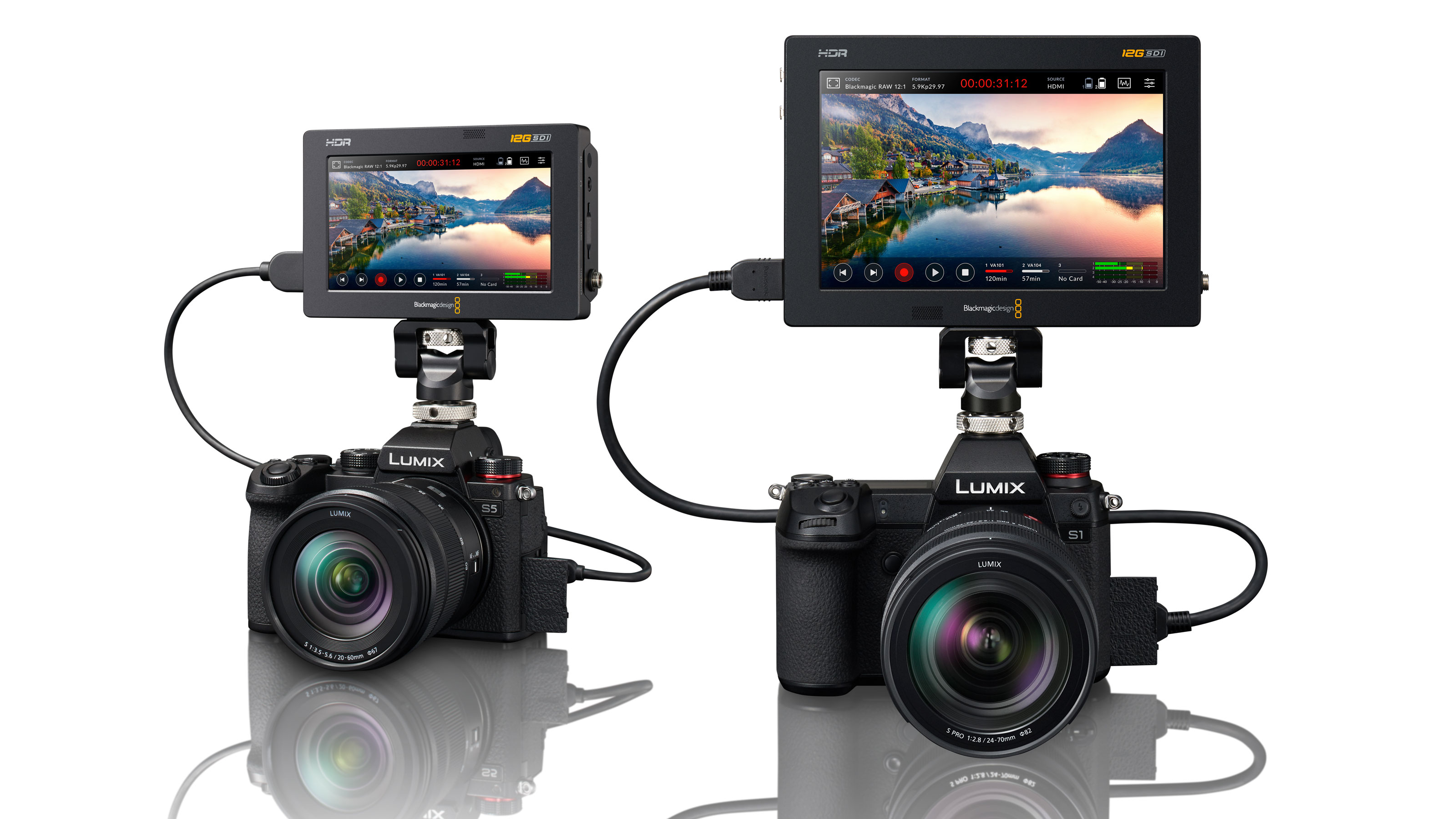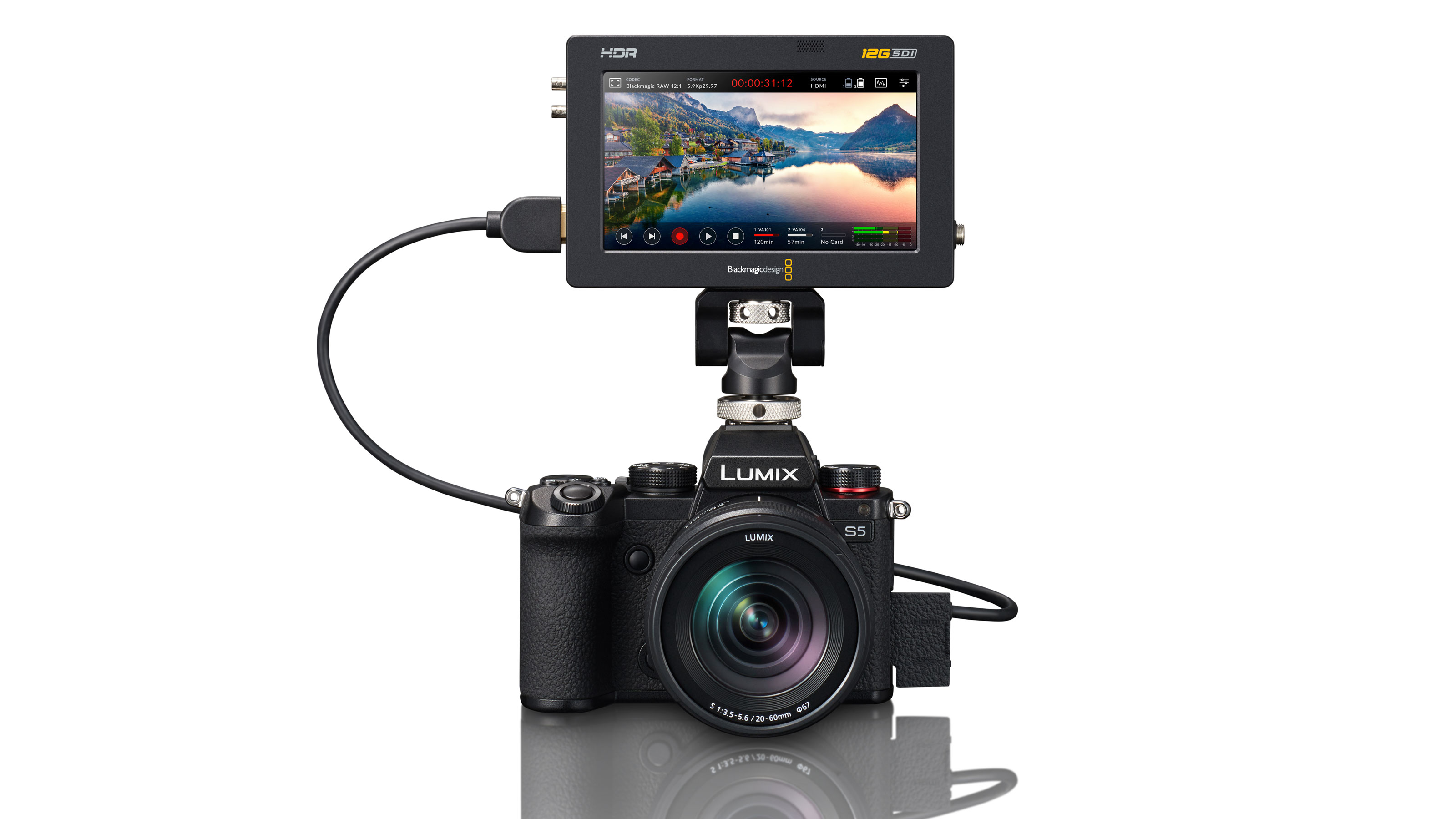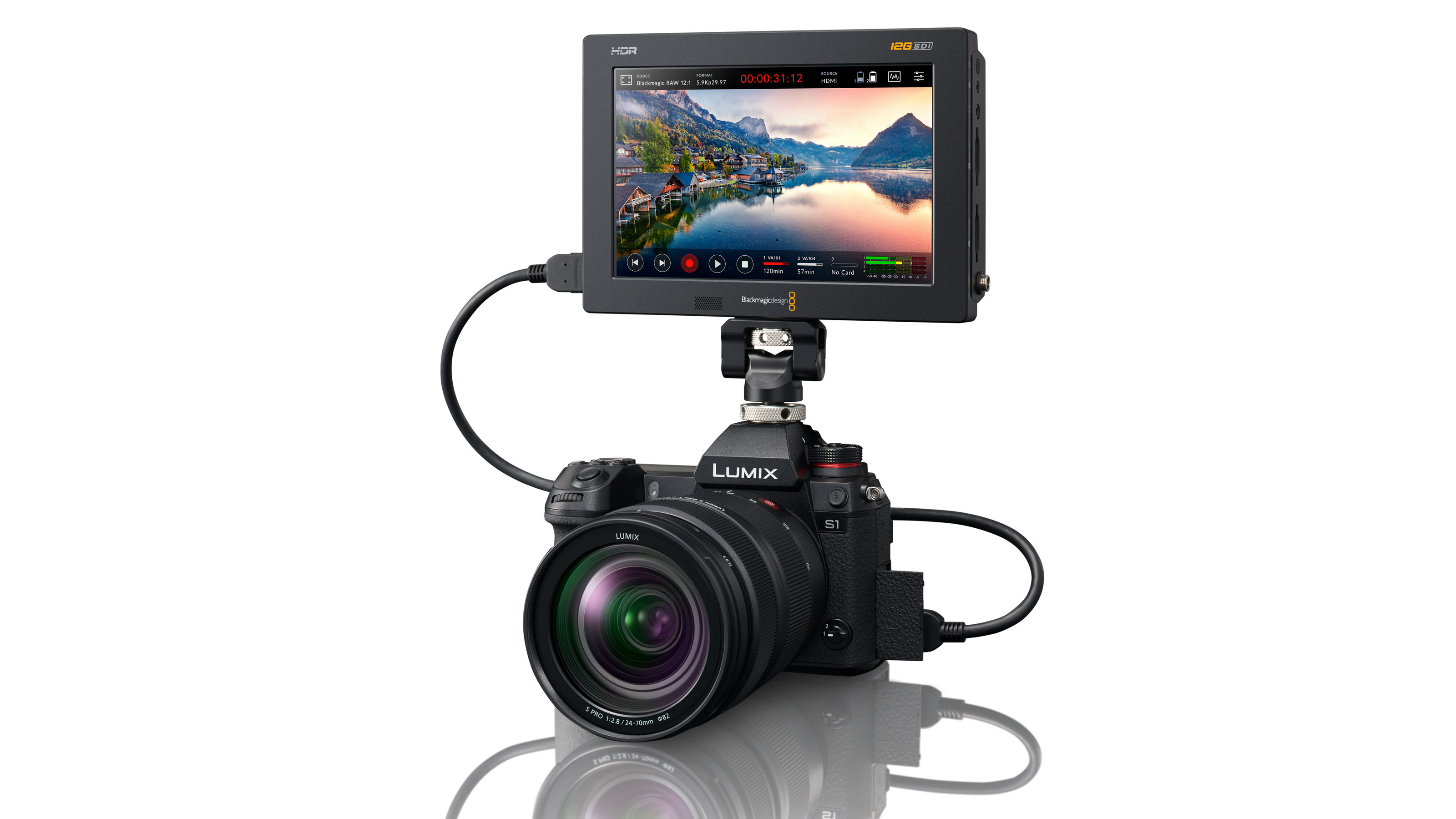Panasonic firmware updates bring raw 5.9K HDMI output to Lumix S5 and Lumix S1
Panasonic's firmware updates are for use with Blackmagic Video Assist 12G HDR recorders and bring 12-bit raw capture too

The latest round of Panasonic firmware updates will be especially useful to videographers, as they bring the ability to record Blackmagic RAW video to an external Blackmagic Video Assist 12G HDR recorder.
This feature will be added to the Panasonic Lumix S5 and the Lumix S1, though Blackmagic RAW output from the Lumix S1 requires the Panasonic DMW-SFU2 software key to be installed.
Raw output over HDMI is becoming increasingly in demand for mirrorless video output, and a number of makers offer ProRes RAW output to the Atomos Ninja V. Blackmagic RAW and Video Assist recorders are a competing format that offers the same advantages for high-quality video capture and post production grading work.

Panasonic Lumix S5 Firmware Version 2.3
The Lumix S5 is already a highly capable video camera at a very competitive price, so this update will extend its appeal still further for more advanced videographers.
The Lumix S5 does not record raw video internally, but if you hook up one of Blackmagic’s Video Assist 12G HDR devices via HDMI, you can both display a larger live view with more information while filming and record raw video to an SD card in the Video Assist 12G in 5.9K, 4K and 3.5K anamorphic resolution.
Keep in mind that Blackmagic RAW is a proprietary format and you will need Blackmagic Davinci Resolve software to play back and edit the RAW files – but there is a highly capable free version of Davinci Resolve you can use for this.
| Area | Resolution | Frame rate | Aspect | HDMI output |
|---|---|---|---|---|
| Full frame | 5.9K (5888x3312) | 29.97p/25p/23.98p | 16:9 | 12-bit |
| APS-C | 4K (4128x2176) | 59.94p/50p/29.97p/25p/23.98p | 17:9 | 12-bit |
| APS-C anamorphic | 3.5K (3536X2656) | 50p/29.97p/25p/23.98p | 4:3 | 12-bit |

Panasonic Lumix S1 Firmware Version 2.1
This firmware update brings the same Blackmagic RAW output over HDMI to the Lumix S1, provided the camera has already been upgraded with the paid-for DMW-SFU2 software key. Otherwise, you will need to buy the software key for this function to become available.
Get the Digital Camera World Newsletter
The best camera deals, reviews, product advice, and unmissable photography news, direct to your inbox!
Panasonic does periodically require these ’software keys’ to unlock further features on its cameras, and it’s a useful if annoying upgrade for the Lumix S1 for videographers.
The Lumix S1 will also get two new Photo Styles: L.ClassicNeo and L.Monochrome S.
| Area | Resolution | Frame rate | Aspect | HDMI output |
|---|---|---|---|---|
| Full frame | 5.9K (5888x3312) | 29.97p/25p/23.98p | 16:9 | 12-bit |
| APS-C | 4K (4128x2176) | 59.94p/50p/29.97p/25p/23.98p | 17:9 | 12-bit |
| APS-C anamorphic | 3.5K (3536X2656) | 50p/29.97p/25p/23.98p | 4:3 | 12-bit |

Panasonic Lumix S1R Firmware Version 1.9
It’s less exciting news for Lumix S1r owners, as this camera simply gets the new L.ClassicNeo and L.Monochrome S Photo Styles added for the Lumix S1, above.
Photoshop Lumix HLG Photo plug-in
Also due for release on July 13 is a Photoshop plug-in to read, edit and save HLG still images. HLG (Hybrid Log Gamma) mode is usually associated with video, and used to display high dynamic range footage on HLG-compatible displays. Panasonic is keen to extend its use to still images too, and while HLG-compatible display devices are still needed, it will at least be possible to edit and optimize these images with Photoshop.
Read more:
• Best on-camera monitors
• Best 4K cameras for video
• Best cinema cameras
• Best Panasonic cameras

Rod is an independent photography journalist and editor, and a long-standing Digital Camera World contributor, having previously worked as DCW's Group Reviews editor. Before that he has been technique editor on N-Photo, Head of Testing for the photography division and Camera Channel editor on TechRadar, as well as contributing to many other publications. He has been writing about photography technique, photo editing and digital cameras since they first appeared, and before that began his career writing about film photography. He has used and reviewed practically every interchangeable lens camera launched in the past 20 years, from entry-level DSLRs to medium format cameras, together with lenses, tripods, gimbals, light meters, camera bags and more. Rod has his own camera gear blog at fotovolo.com but also writes about photo-editing applications and techniques at lifeafterphotoshop.com
